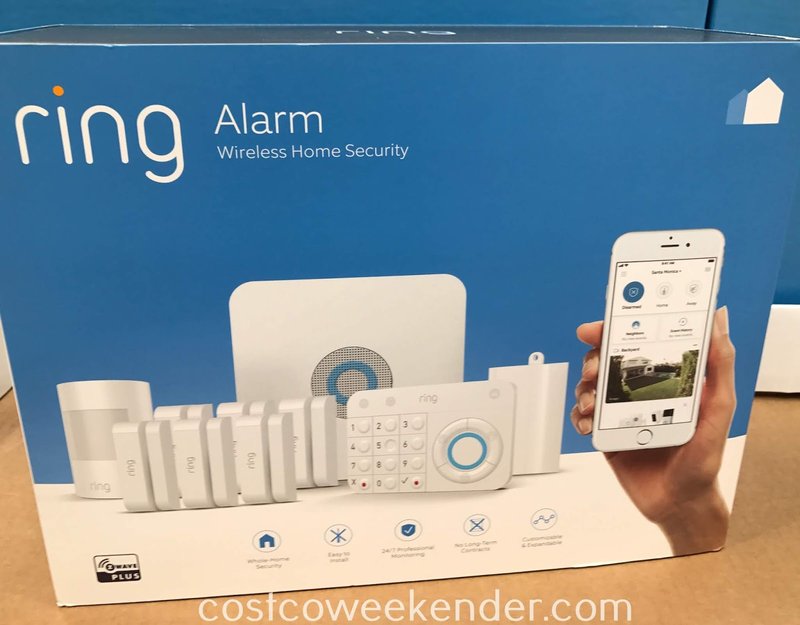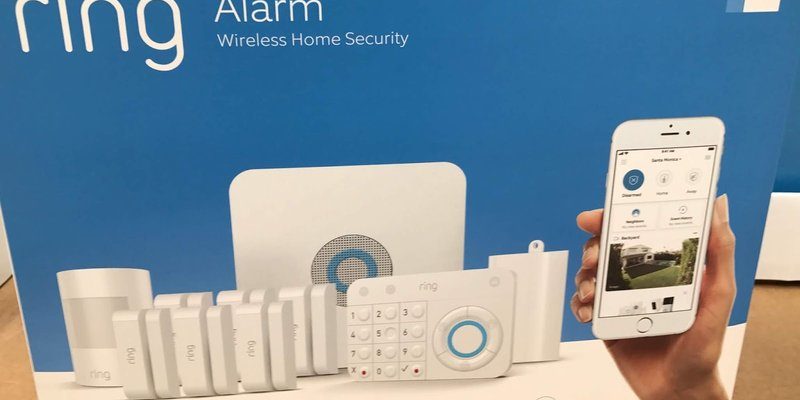
Here’s the thing: Ring makes the registration process pretty user-friendly, but there are a few key pieces of info you’ll need on hand. Think of it like a digital “passport” for your new security system. From account creation to syncing devices and troubleshooting hiccups, every step comes down to entering the right details. Maybe you’ve got questions about privacy, or maybe you’re worried you’ll forget something vital. Don’t stress—I’ll walk you through it all, just like I would with a friend who’s new to smart home gadgets.
Why Do You Need to Register Your Ring Security System?
Let me explain why registration isn’t just a hoop to jump through—it actually matters. When you register your Ring security system, you’re linking the device to you and your household. This isn’t just for fun; it’s about security and support. If you ever need troubleshooting help, or if there’s a problem like a lost code or a device reset, Ring’s support team can’t assist unless your device is properly registered to your account.
Another big reason is features. Without registration, your system is basically running in “demo mode.” Want to receive alerts on your phone? Or pair with your Alexa device? Or use the cloud recording features? All of that is unlocked when you officially register. In case you’re worried about privacy, Ring encrypts your personal info and device data, so only you—and trusted folks you invite—can access your system remotely.
Honestly, skipping registration cuts you off from the very things that make a Ring security system useful. Plus, if you ever move or sell your device, official registration makes transferring ownership smooth and secure.
The Essential Info You’ll Need for Ring System Registration
Here’s where people usually get tripped up: they start unboxing, get excited, but then hit a wall because they don’t have everything ready. So, before you begin, gather the following—trust me, you’ll thank yourself later.
- Email Address: This will be your “account ID.” Be sure it’s one you check often, since Ring sends important info and verification codes here.
- Password: Choose a strong password you’ll remember. Setting up two-factor authentication adds even more security, and Ring now requires it as an extra step.
- Physical Address: Ring systems are tied to locations, not just people. Enter your exact home address; this is crucial for emergency services and accurate notifications.
- Mobile Device: You’ll need a smartphone or tablet (iOS or Android) with the Ring app installed. The registration and pairing process happen through the app.
- Wi-Fi Network Details: Make sure you know your Wi-Fi name (SSID) and password—Ring devices depend on a strong, consistent network to sync properly.
- Device Serial Number or QR Code: On the back or bottom of your Ring device, you’ll see a QR code or a long serial number. This is how you “claim” your hardware during setup.
Each piece plays a key role. For example, the QR code is what links your physical device to your digital account, while your Wi-Fi info ensures everything can “talk” together. If you get stuck on any of these, don’t worry—Ring’s app guides you step-by-step, but having all this info ready keeps things running smoothly.
Step-by-Step: How to Register Your Ring Security System
Let’s walk through the actual process, so there’s no guesswork. Imagine you’re sitting on the living room floor with your new device and your phone out. Here’s what you’ll do:
- Download the Ring App: It’s available on both iOS and Android app stores. This is the hub for all pairing, syncing, and troubleshooting.
- Create or Log Into Your Account: Use your email and create a strong password. If you already have a Ring device, just log in; you can add multiple devices to the same account.
- Scan Your Device’s QR Code: The app prompts you to use your phone camera to scan the QR code (usually found on the back of the Ring device or in the box). This step “claims” your device.
- Enter Your Home Address: Input your exact address—don’t fudge this part, as it’s key for emergency services and accurate alerts.
- Connect to Wi-Fi: The app will search for your home Wi-Fi. Enter your network name and password so the device can sync to the cloud and let you control it remotely.
- Run the Sync Test: The app usually walks you through a connection test to make sure the signal is strong and the device is paired.
After these steps, your Ring security system is fully registered and ready to go. You’ll get a confirmation in the app and usually by email as well. If anything fails to pair or sync, double-check your Wi-Fi, battery charge, and QR code scan—those are the most common hiccups.
Common Troubleshooting During Registration
Here’s the part people rarely talk about: sometimes, even when you follow every instruction, things hiccup. Maybe the QR code won’t scan, the device refuses to pair, or the app gets stuck syncing. Don’t panic—most issues have simple fixes if you know where to look.
First off, make sure you’re using the latest version of the Ring app. App updates often patch bugs or improve QR code recognition. If the code still won’t scan, try wiping the lens of your phone camera or entering the serial number manually (there’s usually a tiny text option right below the camera view). Wi-Fi issues are the next big culprit. If your Ring device can’t sync or keeps dropping connection, check that you’re connecting to a 2.4GHz network, not 5GHz—many Ring devices don’t support the faster band.
And about batteries: if your device is battery-powered, always make sure it’s fully charged before starting setup. Low battery during registration can cause the device to time out or fail to pair. In stubborn cases, a simple reset—holding the small button on the back—can restart the process. Ring’s support site and customer service can also walk you through any persistent problems.
Honestly, even the savviest tech users run into snags. Registration isn’t about being perfect—it’s about having patience and knowing what to check first.
Security and Privacy: What Happens to Your Data?
You might be wondering: what happens to all this info you’re entering? Privacy matters, especially with something as personal as home security. Ring encrypts your data both in transit (when it’s sent from your device to the cloud) and at rest (when it’s stored). This means your email, address, device footage, and codes are protected from prying eyes.
Ring uses your home address to send location-based alerts and, with professional monitoring, connect you to emergency services. Two-factor authentication adds another layer of safety, so even if someone guesses your password, they still can’t access your account without your phone. If you ever sell or give away your Ring system, you can remove your info and transfer ownership via the app.
Here’s something else to know: Ring gives you control over who else can access your system. You can invite trusted family members to your account, and each person’s access is tracked separately. So, you never have to worry about losing control—or forgetting who’s paired to your devices.
What If You’re Registering a Used or Transferred Ring Device?
Say you picked up a secondhand Ring security system or someone gave you their old device. Registering isn’t quite the same as with a brand-new device, but it’s still doable. You’ll need the previous owner to “release” the device from their Ring account before you can claim it. It sounds like a hassle, but it’s actually a really smart security feature—it prevents stolen or lost Ring devices from being paired by someone else.
Here’s how it usually works:
- The current owner goes into their Ring app, selects the device, and removes it from their account.
- You follow the normal registration process, scanning the QR code and entering your info.
- If you get an error saying the device is still registered, wait for a bit—sometimes there’s a delay in the cloud, or the previous owner needs to confirm the removal by email.
If you’re stuck, Ring customer support can step in, but they’ll need proof of ownership (like a receipt or transfer email). This process might take a little extra time, but it’s worth it for your peace of mind.
Comparing Ring to Other Home Security Systems
Here’s something worth mentioning: the registration process for Ring is pretty similar to other brands (like SimpliSafe, Arlo, or Google Nest), but there are some differences. For example, some universal remotes and cheaper systems skip things like address verification or two-factor authentication. While that makes them faster to set up, it also means they’re a bit less secure and don’t offer the same remote features.
With Ring, every device—whether it’s a doorbell, camera, or full alarm system—is tightly integrated through one app. This makes setup smoother, and syncing multiple devices is a breeze. If you’re the kind of person who likes to try different gadgets, you might find Ring’s registration process a bit more detailed, but it pays off with more reliable codes, better pairing, and easier troubleshooting down the road.
Frankly, the extra minute or two you spend registering a Ring system is a small price for stronger peace of mind, deeper features, and hassle-free support.
Final Thoughts: Getting the Most from Your Ring Security Registration
Registering your Ring security system isn’t just a box to tick—it’s your ticket to unlocking everything that makes smart security worth the investment. From syncing your devices and managing codes to remote monitoring and troubleshooting help, it all begins with the right info at hand.
Take the setup slow, double-check your address and network details, and don’t stress if you hit a snag—every smart home journey has its little bumps. Once you’re registered, you’ve got a powerful set of tools for keeping your home, family, and peace of mind protected. And if you ever need to reset, pair a new device, or upgrade your system, all those details you entered at the start will make things ten times easier.
So, grab your phone, your coffee, and your Ring device—registration is the first step to a smarter, safer home.
